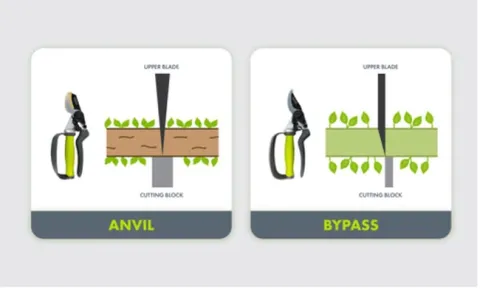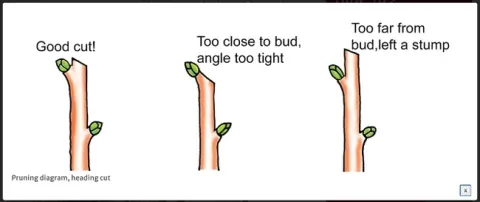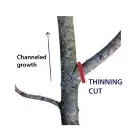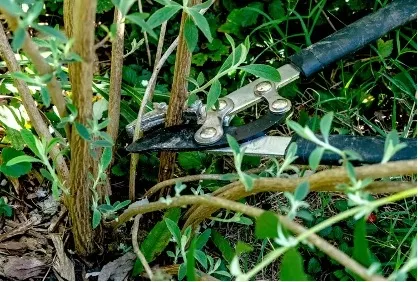Do you feel a bit of trepidation as you prepare to prune a favorite shrub that has become overgrown? Pruning can be a daunting task, especially knowing that plants can be damaged or even killed with incorrect pruning. Keep in mind that it's not necessary to prune all plants, and leaving spent blooms and seeds can provide food and habitat for birds and pollinators, so sometimes no pruning is best. However, pruning can be useful or desirable when done correctly.
Gardeners should always consider the purpose of their pruning. Is it to promote the growth of fruit or flowers? To maintain an attractive shape? To allow light and air into the plant? To create a dense hedge? The answers to these questions will help determine the type of pruning needed.
In addition to the pruning techniques used, the season chosen for pruning can affect the health of the plant. This article will discuss tools and techniques for pruning shrubs and perennials with a focus on which plants should be pruned during the winter season.
Which pruning tool?
Bypass pruners, which have blades that cross each other like scissors, are less likely than anvil pruners to damage branches because anvil pruners work by crushing the stem against the bottom plate. Anvil pruners are useful for cutting up dry, dead branches, but pruning live or recently dead branches should be done with bypass pruners. All pruners should be cleaned with 70% isopropyl alcohol to prevent the spread of diseases from one plant to another.

Pruning basics
- Remember the four Ds: remove dead, damaged, diseased or deranged (crossed, rubbing) branches any time of the year.
- Prune on a dry day to prevent the spread of waterborne diseases.
- Heading is used to curtail growth and involves cutting the stem back to a stub, lateral bud or branch. This will usually result in a flush of upright dense new growth from just below the cut.
- Cut branches at a 45-degree angle, about ¼” above an outward facing bud, angling away from the bud.

- Thinning cuts remove an entire branch near the stem allowing the plant to become more open. This doesn't usually produce a flush of new, vigorous growth. However, because it channels energy into the remaining branches, the shrub will usually grow taller and wider, which may not be what you wanted.
- Do not cut into the branch collar or the branch bark ridge—they contain special cells that help heal the cut. Angle cuts slightly upward.

- Shearing—using clippers to cut the tips of the branches off evenly—can be used to create a formal-looking hedge or shrub. Frequent shearing can affect the growth and longevity of shrubs because it creates an outer shell of small leaves that block air and sunlight from the mostly bare branches inside. Thus, it's best if hedges are narrower at the top to allow light to reach the lower leaves.
Winter pruning
A dry day in late winter is a good time to prune most deciduous and evergreen shrubs, although there are many exceptions. The rationale for pruning in the winter is that many plants and pests are dormant then, so there is less risk of pests getting into the wound. Examples of shrubs that can be pruned in late winter include:
- Bluebeard (Caryopteris spp.)
- Butterfly bush (Buddleia spp.)
- California honeysuckle (Lonicera hispidula)
- California wild grape (Vitis californica)
- California wild rose (Rosa californica)
- Chokecherry (Prunus virginiana)
- Juniper (Juniperus spp.)
- Mountain mahogany (Cercocarpus betuloides)
- Pipestem clematis (Clematis lasianthus)
- Serviceberry (Amelanchiar utahensis)
- Western spice bush (Calycanthus occidentalis)
Some shrubs can be cut almost to the ground (coppiced) in winter to rejuvenate them. This will delay blooms for a few years, but it can result in a healthier plant over time. These include:
- Butterfly bush (Buddleia spp.)
- California fuchsia (Epilobium canum), which can be mowed or cut with a string trimmer
- Catmint (Nepeta spp.)
- Lilac verbena (Verbena lilacina ‘De La Mina')
- Matilija poppy (Romneya coulteri)
- Santa Barbara daisy (Erigeron karvinskianus)
- Spirea (Spirea spp.)
- Forsythia (Forsythia spp.)

Spring and Summer Pruning
Generally, spring-flowering shrubs should not be pruned in winter because they bloom on last year's wood. Cutting the old wood will remove emerging flower buds and decrease spring flowering. However, if your goal is to reshape the shrub and you're willing to sacrifice some blooms, go ahead and prune it. Old wood feels brittle and looks gray; the new wood that forms in springtime is flexible and greener.
These shrubs should be pruned after blooming in the spring, ideally within two weeks:
- Azaleas (Rhodondendron spp.)
- Camellias (Camellia spp.)
- Daphne (Daphne spp.)
- Lilacs (syringa spp.)
Many California natives are dormant in the summer, so pruning at that time is recommended, although there are exceptions to this guideline also. Some that are best pruned soon after blooming include:
- California lilac (Ceanothus spp.)
- Coffeeberry (Frangula californica)
- Manzanita (Arctostaphylos spp.)
- Mock orange (Philadelphus spp.)
Hydrangeas
These are a special case—some varieties bloom on old wood and some on new wood. The following varieties bloom on new wood, so they can be pruned during the winter:
- Hydrangea arborescens
- Hydrangea paniculata
Varieties that bloom on old wood and thus should be pruned after summer blooming include:
- Hydrangea macarophylla
- Hydrangea quercifolia.
Takeaways
Some main points to remember:
- First, ask yourself whether the shrub needs to be pruned and be clear about your intention. Reduce size? Reshape? Rejuvenate?
- Choose the correct pruning shears for the task and be sure they are clean.
- Make an angled cut about ¼” above a bud for heading back growth.
- Cut near the main stem but not into the branch collar for thinning the plant.
- Prune at the correct time of year, generally during the plant's dormancy.
If you are not sure of the best time to prune a particular shrub, you can inspect it to see if the buds are starting to form on old or new wood. It's also a good idea to research pruning practices for individual species, given that there is so much variety, even within the same genus.
Taking some time to plan and prepare for pruning will help ensure beautiful and healthy shrubs in your landscape.
Resources
How to Prune California Native Plants.
Pruning Cuts. (Includes some short, clear videos that illustrate types of pruning cuts)
Pruning Fundamentals
Pruning Shrubs and Hedges in the Home Garden
Pruning Trees and Shrubs
When to prune hydrangeas for best bloom
When Should I Prune Plants in the Landscape?

